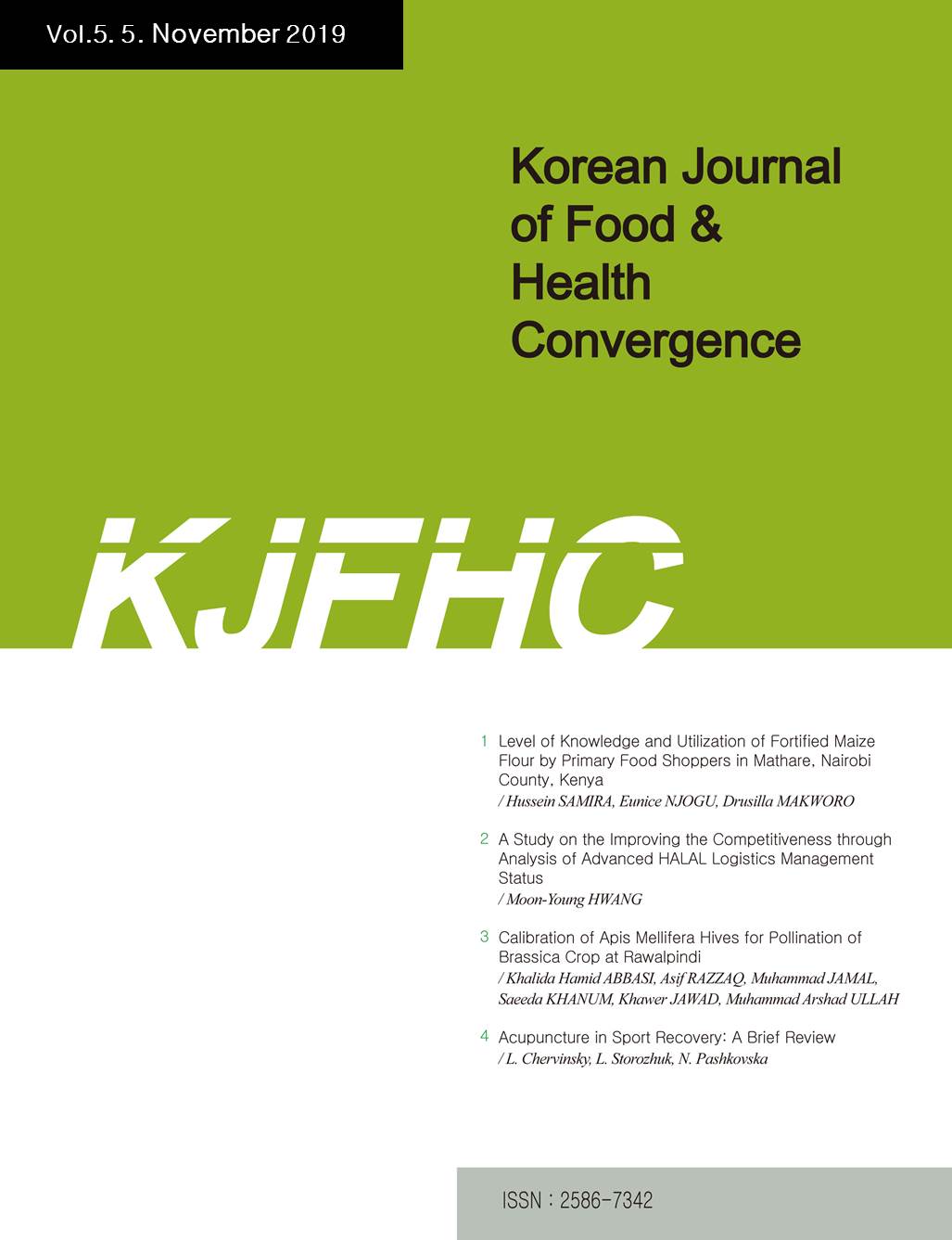 E-ISSN : 2586-7342
E-ISSN : 2586-7342
Vol.4 No.1
Abstract
The health status of menopause and its correlates among middle aged 160 rural and urban women was studied during 2015. The women who attained menopause and belonging to 40-55 years age range were selected from 8 villages of 4 talukas of Dharwad and Bagalkot Districts. The health status of women was evaluated by using standardized questionnaire, Post Graduate Institute of Medical Education and Research (PGI). The structured interview schedule was used to collect personal information like name of the family members with their age, relationship with respondent. The Socio Economic Status (SES) of family was assessed by using Socio Economic Status scale developed by Agarwal (2005). The results revealed that 53.75 per cent respondents shown moderately affected followed by 26.25 per cent mildly affected and 20 per cent of women indicated severely affected health status. The mean value of health status in rural women is higher (<TEX>$23.67{\pm}7.02$</TEX>) than mean value of (<TEX>$21.50{\pm}6.89$</TEX>) urban women means the rural women had more health problems than urban women. Health status were high negatively significantly related with SES, education and occupation means women belonged to better SES category, literate and working women experienced less health problems compared to women who had poor SES, illiterate and non-working.
Abstract
A radiation dosimeter is important to assess quality assurance (QA) of radiation therapy devices and to estimate the radiation dose in vivo dosimetry. Recently, optically stimulated luminescence detector (OSLD) is widely used in clinical filed. Therefore, the purpose of this study is to evaluate dose, energy, and angular dependence of OSLD and EBT3 film. The absorbed dose in clinical linear accelerator (Linac) beam is calibrated for dose per monitor unit (MU). Dose, energy, and angular dependence of OSLD and EBT3 film are estimated after the calibration procedure. The absorbed dose is measured at 50, 100, 150, and 200 cGy in an 6 MV X-ray beam for dose dependence. A dose of 150 cGy is delivered to OSLD and EBT3 film with 6 and 10 MV photon energies for energy dependence. For measurements of angular dependence, angular positions of gantry are <TEX>$0^{\circ}{\pm}80^{\circ}$</TEX> with 6 MV at 150 cGy. The results of dose dependence is linear for OSLD and EBT3 film. For the results of energy dependence, errors were 0.39% and 0.03% for OSLD and EBT3 film, respectively. The results of dose for angular is decreased from <TEX>$0^{\circ}$</TEX> to <TEX>${\pm}80^{\circ}$</TEX> for both OSLD and EBT3 film. When angle of <TEX>$0^{\circ}$</TEX> is normalized to 1, and the dose is decreased to 60 and 66% at <TEX>$80^{\circ}$</TEX> for OSLD and EBT3 film, respectively. Dose and energy dependence of OSLD and EBT3 film are measured within the recommendation of manufacturer. Angular dependence is increased from <TEX>$0^{\circ}$</TEX> to <TEX>${\pm}80^{\circ}$</TEX> for OSLD and EBT3 film. The characteristics of OSLD and EBT3 film are similar and expected to useful for clinical field.
Abstract
The main issue of CT is radiation dose reduction to patient. The purpose of this study was to estimate the image quality and dose by iterative reconstruction (IR) for adults and pediatrics. Adult and pediatric images of phantom were obtained with 120 and 140 kV, respectively, in accordance with radiation dose in terms of volume CT dose index (<TEX>$CTDI_{vol}$</TEX>): 10, 15, 20, 25, 30, 35 mGy. Then, the adult and the pediatric images are reconstructed by filtered-backprojection (FBP) and iterative reconstruction (IR). The images were analyzed by signal-to-noise ratio (SNR). SNR is improved when IR and 140 kV are applied to acquire adult and pediatric images. In the adult abdomen, according to diagnostic reference level, the SNR values of bone were increased about 27.84 % and 27.77 % at 120 kV and 140 kV, and the tissue's SNR values of the IR were increased about 29.84 % and 33.46 % 120 and 140 kV, respectively. Dose is reduced to 40% in adults abdomen images when using IR reconstruction. In pediatric images, the bone's SNR were also increased about 17.70% and 18.17 % at 120 kV and 140 kV. The tissue's SNR were increased about 26.73 % and 26.15 % at 120 kV and 140 kV. Radiation dose is reduced from 30% to 50% for bone and tissue images. In the case of examinations for adult and pediatric CT, IR technique reduces radiation dose to patient, and it could be applied to adult and pediatric imaging.
